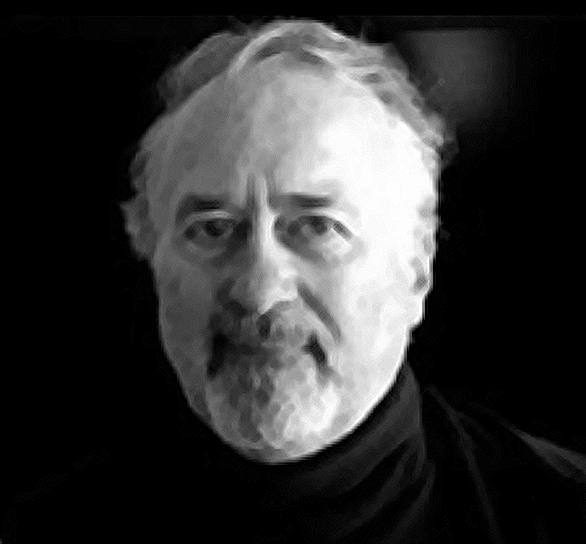
How did Chrome and Punishment come about? What made you write it?
The best answer I can give to that question is that Dostoevsky drove me to write it, even if that sounds a bit weird. Authors are always driven by other authors whom they’ve grown up with and modeled themselves after. It’s like that phrase: Standing on the shoulders of giants. To me, Dostoevsky was and still is a giant of world literature. His work resonates long after his death in 1881 and is typically rediscovered by new generations of readers through time. Each one of his works pushes the envelope of what fiction can and should be. And yet, I found something missing in the work I was most drawn to over the years, namely, Crime and Punishment. The character of Raskolnikov needed an upgrade, as it were, a re-imagining for another generation of readers. Chrome and Punishment is that re-imagining from a postmodern perspective.
What happens in your mash-up that’s different from the original?
Many plot elements, scenes and characters are different from what Dostoevsky created. That said, those elements are carefully woven into the new narrative, so they don’t appear out of place, or as appendages to the original. It’s like taking the frame of an old house and adding new rooms, perhaps a new roof and other “improvements” that enhance the original. In this case, we find that Raskolnikov is a prince, not a pauper, or low-life yet a prince who’s been ![]() disinherited by his aristocrat father. He’s still living as a student in a garret, impoverished, driven more than slightly mad by his diminished circumstances. You could say he’s definitely fallen on hard times. Meanwhile he’s fighting, personally and publicly, against all these Chromes in the city, a new class of denizens in St. Petersburg who wear chrome-plated suits to protect against the harsh winters and oppressively hot summers of the city. He rails against their rise as this new class of Russians. The Chromes are not robots, although they appear at times to be half-human, emotionless, cold, calculating, greedy. The city itself is something of a rathole, but with beautiful, Italian-built palaces commissioned by the Czars in the 1860s.
disinherited by his aristocrat father. He’s still living as a student in a garret, impoverished, driven more than slightly mad by his diminished circumstances. You could say he’s definitely fallen on hard times. Meanwhile he’s fighting, personally and publicly, against all these Chromes in the city, a new class of denizens in St. Petersburg who wear chrome-plated suits to protect against the harsh winters and oppressively hot summers of the city. He rails against their rise as this new class of Russians. The Chromes are not robots, although they appear at times to be half-human, emotionless, cold, calculating, greedy. The city itself is something of a rathole, but with beautiful, Italian-built palaces commissioned by the Czars in the 1860s.
Have you been to St. Petersburg? Do you know the city?
Yes. I’ve been there, visited, studied its streets, alleyways, canals. Can’t say that I really know as well as I’d like to, although Dostoevsky provides quite a map of its geography in his novels, which I’ve used in my mash-up so the reader can navigate the terrain, as it were.
How does Raskolnikov fare under these conditions?
Badly, as usual. Lots of grief and struggles with his family and friends. The emotional landscape that Dostoevsky depicts is one of stark terror, a struggle for survival in the rathole of the city (in the 1860s St. Petersburg was the third largest city in Europe, crawling with over a half million people). For one thing, Raskolnikov discovers he has a double who is plotting against him and wants to take over his personality and murder his father. Raskolnikov must foil that plot or else he too will be murdered. Nothing comes easily for the young student prince living on the edge of poverty after dropping out of St. Petersburg Technical University, where, like Dostoevsky himself, he was studying engineering.
Does he commit the axe murders from the original novel?
Well, I won’t give away the story. That wouldn’t right or fair to readers coming to the work for the first time. You’ll have to see for yourself what happens. There’s plenty of suspense in this mash-up to keep you turning the pages.
Are there other new characters you’ve introduced in the mash-up?
Indeed there are: Dr. Hoffmann, a psychoanalyst trained in Vienna by Freud who counsels the young prince; Raskolnikov’s father and his father’s new trophy wife Grushenka; Nicola Tesla, Raskolnikov’s university friend who has invented the first electric bicycle; the Godfather (in Russian the Krestnii Otets) who is boss of the Petersburg crime syndicate known as the Organizatsiya and his right-hand man Vladimir Ilich Ulyanov, a young revolutionary with grand ambitions of his own; Konstantin Stanislavski, the director of the Moscow Art Theatre, now in Petersburg with his acting troupe, who recognizes the young prince’s acting talents and wants the young prince to join the troupe.
Why is this a mash-up?
Well, it’s based on the original translation by Constance Garnett from 1916, which is in the public domain, and which I drew from and reworked, and dare I say, transformed into this new re-telling. I added about 50,000 new words to the original and the whole thing runs about 226,000 words.
Does it end the same way as the original?
It does not. In fact, it has 3 different endings, in keeping with postmodern fiction, where one ending is really never good enough, in my opinion, for any work of fiction. Life itself never has a single ending, does it? Even after you’re long gone, you still live on in the memories, dreams and reflections of your loved ones. Anyway, the 3 endings are integral to the mash-up and to the character of Raskolnikov and his fate.